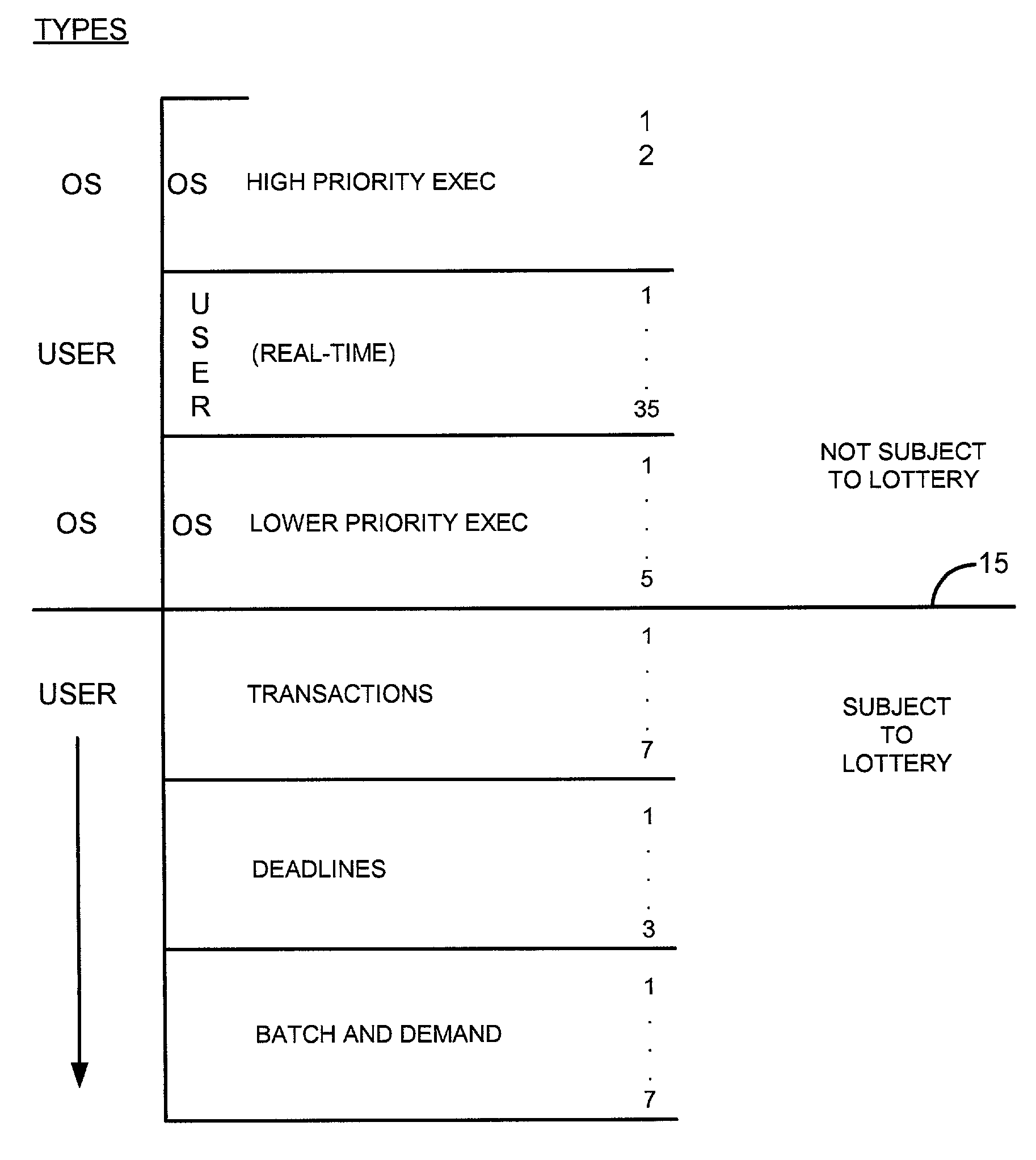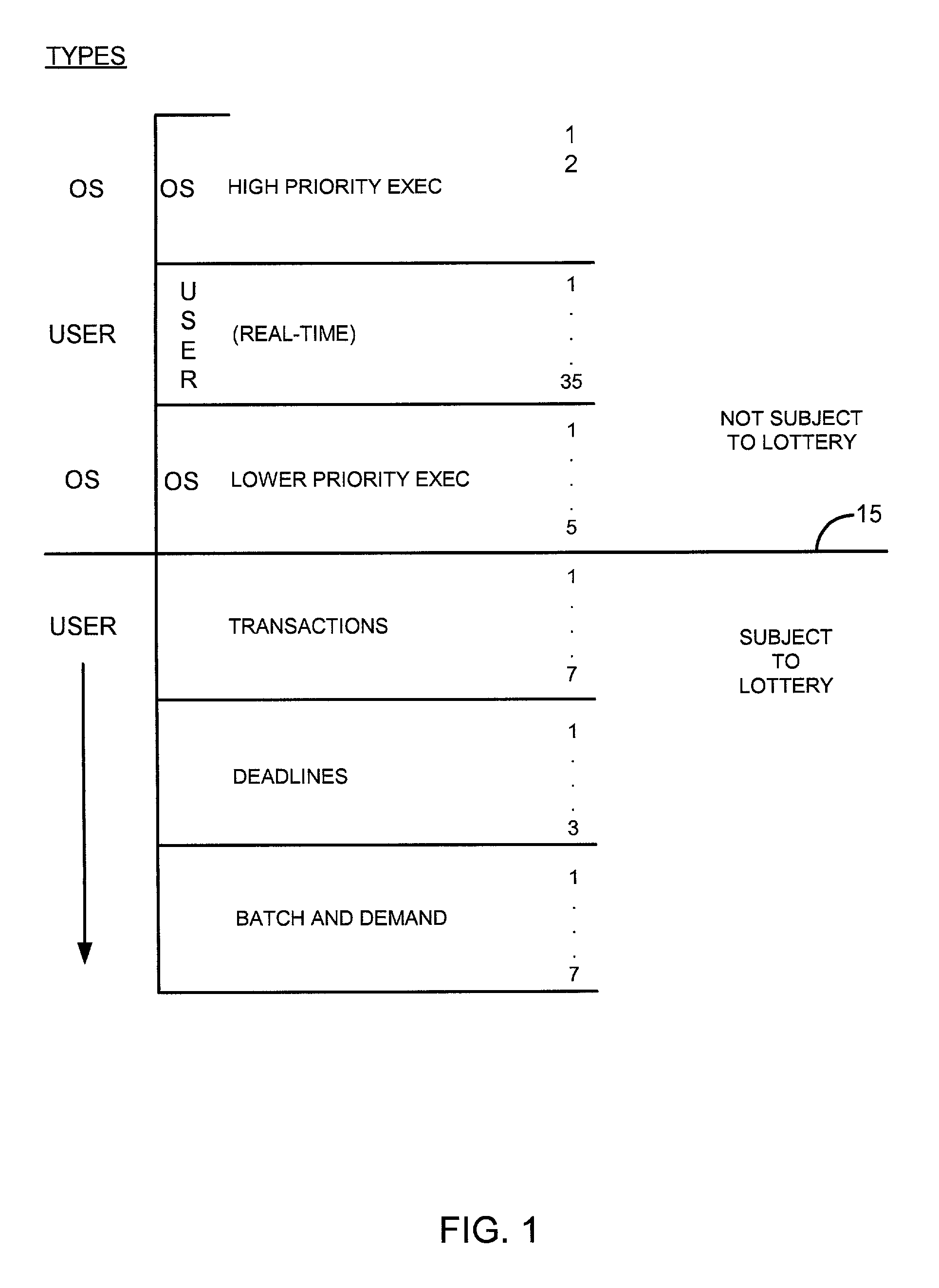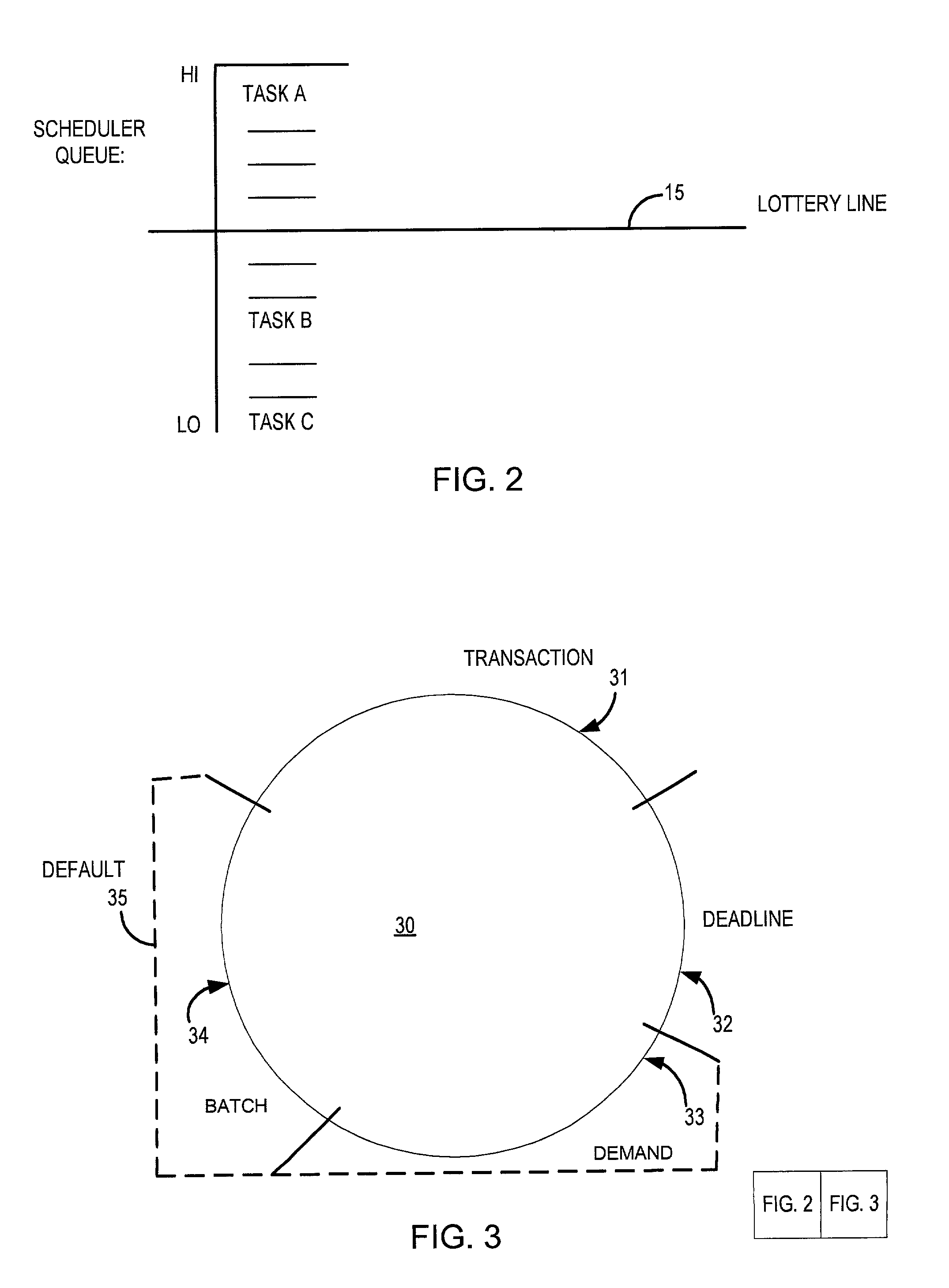Operating system scheduler/dispatcher with randomized resource allocation and user manipulable weightings
a scheduling system and resource allocation technology, applied in the field of multi-processing dispatchers, can solve the problems of affecting the value of the computer system to the business, affecting the value of the computer system, and unable to obtain instruction processor resources with sufficient probability, so as to increase the likelihood of obtaining instruction processor time, reduce the amount of time for a task, and increase the effect of tim
- Summary
- Abstract
- Description
- Claims
- Application Information
AI Technical Summary
Benefits of technology
Problems solved by technology
Method used
Image
Examples
Embodiment Construction
[0022]In FIG. 1, there are illustrated various types of tasks which are of high enough priority that they will be given instruction processor time at a very high priority basis in the scheduler queue, above line 15, and below line 15 are various types of tasks which are not of sufficient priority to escape the application of the lottery form of allocation of processor time described in detail herein. (For extremely low priority tasks, our preferred embodiment also has a sub-lottery system which we discuss later that operates when the lottery fails to find a task).
[0023]Specifically, there are three types or classes of tasks which are given above-the-line priority. A user may specify a different number, or allocate different numbers of levels of tasks to each of the classes as may be desirable given a particular operating environment. However, it should most often follow that OS tasks which are of high priority outrank in importance any real-time tasks (such as communication tasks), ...
PUM
 Login to view more
Login to view more Abstract
Description
Claims
Application Information
 Login to view more
Login to view more - R&D Engineer
- R&D Manager
- IP Professional
- Industry Leading Data Capabilities
- Powerful AI technology
- Patent DNA Extraction
Browse by: Latest US Patents, China's latest patents, Technical Efficacy Thesaurus, Application Domain, Technology Topic.
© 2024 PatSnap. All rights reserved.Legal|Privacy policy|Modern Slavery Act Transparency Statement|Sitemap



